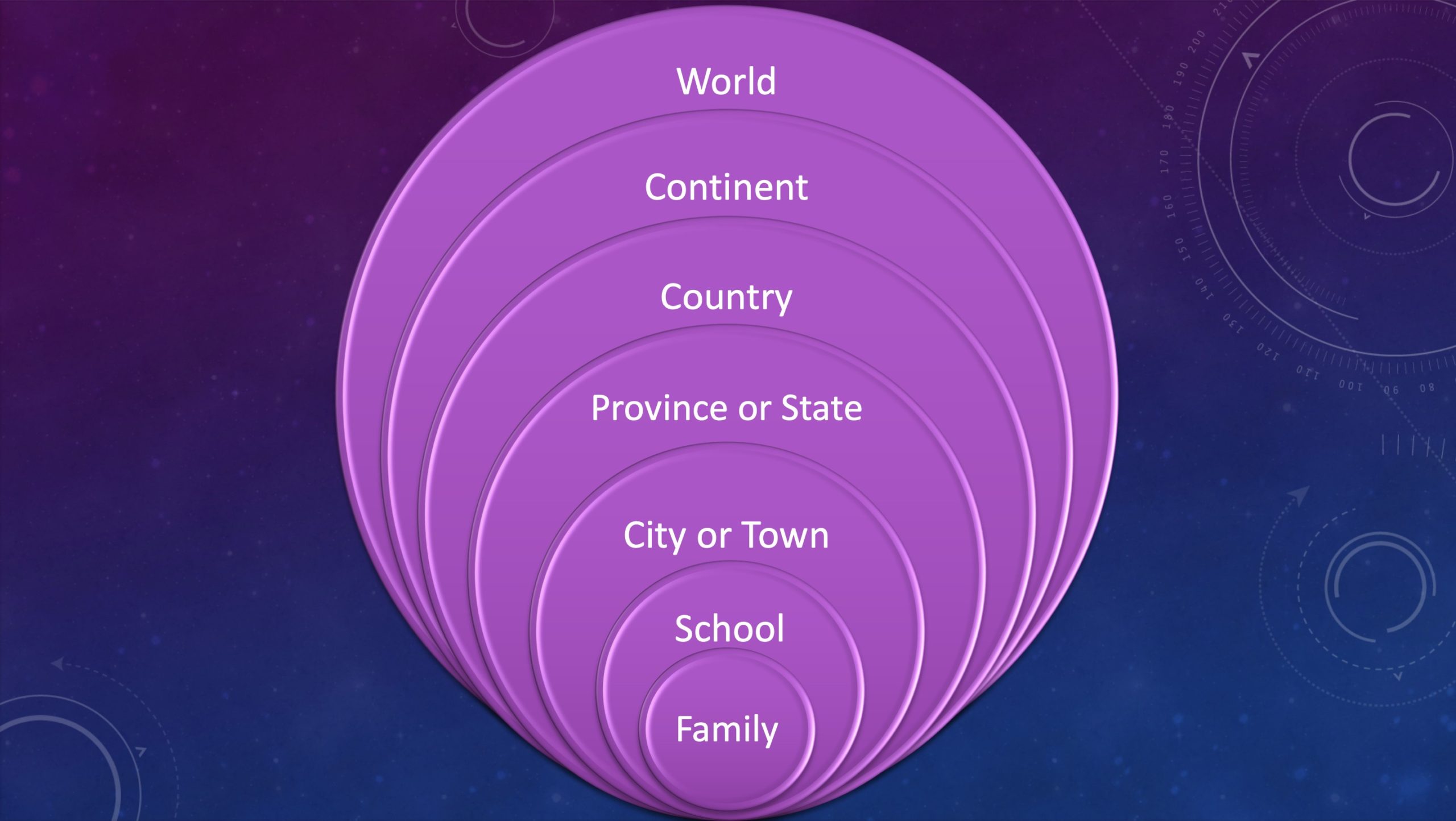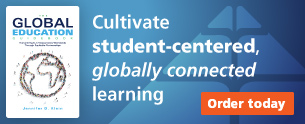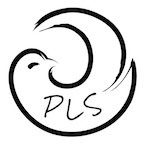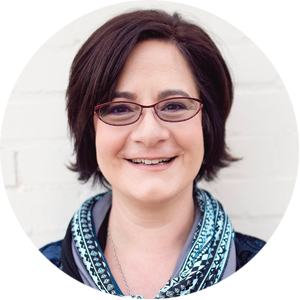Expanding Circles of Community: Classroom Partners for an Increasingly Connected World
Having just left South America to move back to the United States – and back into the expansive circles of my global networks – I find myself reflecting on my ever-shifting conceptions of community. Educators focused on authentic learning know that community partnerships are an essential feature, that students learn to leverage networks when their education has offered opportunities to learn from and with collaborative partners and experts. We also know that we are currently living a historical moment, a pandemic that has interrupted our sense of presential community while it has simultaneously erased the lines that used to define the limits of those communities. The more we use technologies to connect, particularly to collaborate in response to our shared challenges, the less the word “community” means just those people we show up to learn and work with.

For over a decade, I have worked with teachers to employ the concept of “Glocal Learning,” as introduced by Chris Harth in an article for the Independent School journal, to curricular design. Three years ago, when I became Head of School at Gimnasio Los Caobos, a PreK-12 bilingual school in Colombia, I started developing an image to capture the concept. It was an attempt to visualize the world in concentric circles of connection, from the most local to the most global. Each time I’ve shown this image to teachers in workshops over the years, another circle has appeared, at their suggestion, to round out the expanding circles of community partners we might connect with in our classroom projects—and to foster a flexible mentality about community as a central part of students’ world view.

It is essential to start this conversation with a well-articulated asset mindset, one grounded in equity and recognition of the skills and insights every human has to offer because of their culture, context and experiences. As I wrote in The Global Education Guidebook, global education becomes dangerous when students develop a “savior mentality” wherein one group believes they can save another. Projects founded on learning from and with for the sake of collaborative action can foster the more constructive global competencies our world needs. The most equitable way of thinking of community partners and student action is to learn globally and act locally, so that we’re not “colonizing” other cultures or assuming our solutions are the best for other communities’ contexts. Instead, we are honoring and learning from the solutions local leaders already bring to their communities around the world.
In my experience, students’ developmental levels often make obvious how we might manage the interplay of circles of community. Younger students, for example, struggle to grasp abstract concepts like region, country or world, and are more easily able to conceptualize the circles they see and experience each day, those of family, school, and town or city. Projects which include investigation and action at the family and school level, with occasional outreach into broader circles of city or national community for their expertise, can be deeply empowering for our youngest students. Take, for example, an early years project on the life cycles of plants which serves to provide the school’s infirmary with medicinal plants and written guides for their use. The investigation of plant properties could include community partners at the local and global levels, while growing plants and writing guides would be an application of learning and solutions at the school and family levels.
Students in their primary years demonstrate an obsession with themselves and their local environment, but they also have an ever-increasing curiosity about what lies beyond those limits. This is an ideal age for projects that focus on globally-oriented themes, but with the strongest elements happening locally. For example, I’ve seen great success with migratory bird projects in the primary years, where students understand the migratory patterns and current threats to those movements, focusing much of their investigation on birds migrating through their local area. Such projects give students an opportunity to work with community partners along the birds’ intercontinental routes, such as other classrooms that see the same birds, as well as opportunities to work with scientists along the route to understand how students might help mitigate the threats to those species. At Gimnasio Los Caobos, students’ investigations taught them that the birds were lacking key elements of habitat for their survival along the route, and students planted a nature reserve on campus to respond to those needs.
Students in their pre-teens, those challenging years of pre- and early adolescence, tend to need projects which help them break down barriers and develop a broader sense of what community might mean if people are kind and inclusive. Projects on determining and ensuring a dignified wage can be connected to dignity for all students inside the schoolhouse community, for example, and community partners can help students see the danger of exclusion, the loss for all when any voices are silenced. Allowing students to participate in local change, with the support of local and global experts, allows students to create immediate impact. One of my favorite approaches at Caobos was projects on peacebuilding, a process still struggling forward in Colombia. The topic invites many important explorations of human needs and the causes of war and migration, but it also invites a recognition of how peaceful behavior inside the school community can help develop the habits of empathy and inclusion which are needed at a national level as well. And the learning went beyond local and national circles when community leader Hindo Kposowa came to Caobos from Sierra Leone, to share his story of community development as an act of peacebuilding and to invite students to think beyond their social conflicts and to imagine a better world.
 Students in their teens need to start seeing how their action can make a significant difference, and this age group is hungry for opportunities to act in earnest. Classrooms which leverage that hunger, instead of tamping it down, will see significantly higher engagement—and far less apathy and boredom-induced destructiveness as well. With teenagers, we want the classroom to build their networking skills across those circles of community, and to solidify their sense of how the circles influence each other. We can use community partners at all levels of community, to help us understand real issues by connecting with the people who are living those challenges or are working to solve them. Learning experiences in the adolescent years should allow students to understand how other communities are addressing similar challenges, to work in global collaboration to co-create solutions, and to find avenues for local action.
Students in their teens need to start seeing how their action can make a significant difference, and this age group is hungry for opportunities to act in earnest. Classrooms which leverage that hunger, instead of tamping it down, will see significantly higher engagement—and far less apathy and boredom-induced destructiveness as well. With teenagers, we want the classroom to build their networking skills across those circles of community, and to solidify their sense of how the circles influence each other. We can use community partners at all levels of community, to help us understand real issues by connecting with the people who are living those challenges or are working to solve them. Learning experiences in the adolescent years should allow students to understand how other communities are addressing similar challenges, to work in global collaboration to co-create solutions, and to find avenues for local action.
At Caobos, social entrepreneurship is given time and space in the high school schedule from 9th to 11th grades, relying on a network of teachers who help students identify challenges and develop businesses/inventions/initiatives that address them. The projects vary in their use of different circles of community, but all students learn to build and leverage the networks required to turn an idea into an actual business, and many students graduate with a working business in place. With social orientations that ask students to consider environmental sustainability and human rights, the program is founded on a deep sense of responsibility across all circles of community, and on a belief in student voice that is far from tokenistic. Because the focus is on real work, not imaginary “PBL-Light” projects, the use of networks to garner investors, resource channels, partner organizations, and experts in the appropriate fields are concrete and real. Yong Zhao claims, in World Class Learners, that the future belongs to those who build their own job niches rather than trying to fit themselves into existing ones, so the ability to navigate and leverage these circles is more than just a soft skill—it is a survival skill for students and communities around the world.
The most important benefit of building community partnerships across these “glocal” circles is how such an education can foster students’ understanding of the fluidity between those circles, the recognition that they are interconnected and interdependent as much as we are as humans around the world. Even small collaborations can help, and their impact grows as teachers and students internalize that larger sense of interdependence and make more and more relevant use of those circles. Our future depends on more people understanding and living from a place of interdependence, making choices that don’t just benefit one circle but that ripple out and benefit others, knowing how to avoid choices that might benefit our own circles but do damage to other communities. I’ve seen first-hand how a globally-connected, student-centered education can spark and support community development in rural and underfunded regions as well. It is something any school can do, with or without fancy infrastructure and technologies; it only requires the will to reimagine the true purpose of education.
20 January 2021 | Written by Jennifer D. Klein
 A product of experiential project-based education herself, Jennifer D. Klein taught college and high school English and Spanish for nineteen years, including five years in Central America and eleven years in all-girls education. In 2010, Jennifer left teaching to begin Principled Learning Strategies, which provides professional development to support authentic student-driven global learning experiences in schools. She has a broad background in global educational program planning and evaluation, student-driven curricular strategies, single-sex education, student service travel, cultural inclusivity, and experiential, inquiry-driven learning. Jennifer’s first book, The Global Education Guidebook, was published in June 2017 by Solution Tree Press. From 2017-2020, Jennifer served as head of school at Gimnasio Los Caobos, a preK–12 project-based school outside of Bogotá, Colombia, where she also wrote for various Colombian publications. As a school leader, writer, speaker, and bilingual workshop facilitator, Jennifer strives to inspire educators and shift their practices in schools worldwide.
A product of experiential project-based education herself, Jennifer D. Klein taught college and high school English and Spanish for nineteen years, including five years in Central America and eleven years in all-girls education. In 2010, Jennifer left teaching to begin Principled Learning Strategies, which provides professional development to support authentic student-driven global learning experiences in schools. She has a broad background in global educational program planning and evaluation, student-driven curricular strategies, single-sex education, student service travel, cultural inclusivity, and experiential, inquiry-driven learning. Jennifer’s first book, The Global Education Guidebook, was published in June 2017 by Solution Tree Press. From 2017-2020, Jennifer served as head of school at Gimnasio Los Caobos, a preK–12 project-based school outside of Bogotá, Colombia, where she also wrote for various Colombian publications. As a school leader, writer, speaker, and bilingual workshop facilitator, Jennifer strives to inspire educators and shift their practices in schools worldwide.

